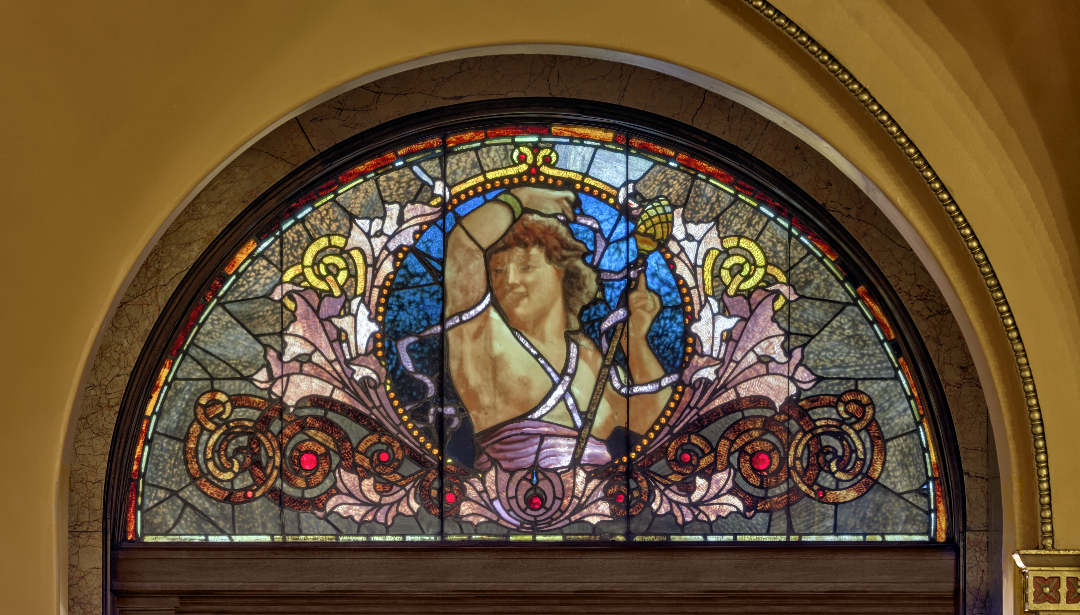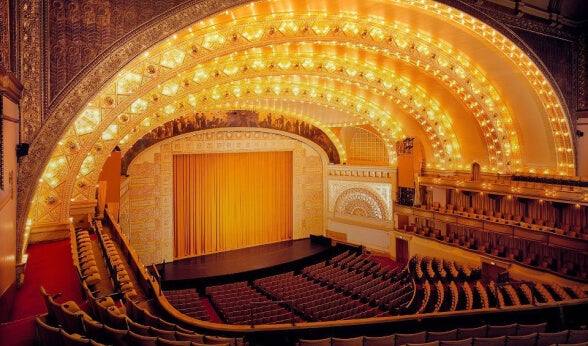
1920-1930
Gesamtkunstwerk
The history of opera can be traced back as early as the 16th century. The art form remained popular for hundreds of years and is still relevant today. During the 19th century when the Auditorium Theatre was being built, the world of opera was at its peak. Some of the most renowned opera composers such as Giacomo Puccini and Giuseppe Verdi were alive during this period, but there was one opera composer that captivated and inspired Auditorium Theatre Architect, Louis Sullivan — Richard Wagner.

Wagner’s contributions to the musical arts were revolutionary and pushed the boundaries of what the performing arts can accomplish and evoke. He transformed the musical landscape by changing the musical orientation of opera, expanding the size of production, exploring theatrical innovations, and challenging musicians’ endurance and musicianship. Sullivan admired Wagner’s work and modeled his own aims in architecture on Wagner’s career. Frank Llyod Wright recalled of Sullivan often singing the leitmotifs and describing the scene to which they belong as he sat at his drawing board.1
One of Wagner’s most notable terms was Gesamtkunstwerk or “total artwork,” which describes a synthesis of music, drama, and poetry that is cohesive and thorough. It is an artwork that uses various art forms to achieve a unified effect. Gesamtkunstwerk provided Sullivan and his contemporaries with a model for comparable possibilities in architecture.2 Inspired by this Wagnerian ideal, Sullivan completed the Auditorium Theatre with mural paintings, poetic inscriptions, coloristic unity, and a stage apparatus capable of performing a Wagner opera.



The Love for Three Oranges
On December 30, 1921, the Auditorium Theatre premiered Sergei Prokofiev’s L’amour des trois oranges, Op. 33 or The Love for Three Oranges. This opera was a result of Prokofiev’s piano recitals around the city which led him to meeting the Director of the Chicago Opera Association, Cleofonte Campanini, who asked him to score an opera. Unfortunately, due to Campanini’s unexpected death, the performance of this opera was postponed to 1921 despite its completion in 1919. The Love for Three Oranges remains as one of Prokofiev’s most famous operas.

First Radio Broadcast
In November 1921, Chicago tested its first live radio broadcast held at the Auditorium Theatre. The broadcast was an orchestra selection and an aria from Madame Butterfly performed by the Chicago Opera Company.3
Willing v. Chicago Auditorium Association
On February 16, 1923 a Chicago Daily Tribune article was published saying that the Chicago Auditorium Association labeled the Auditorium obsolete and a financial failure, and had plans to tear it down to build a new skyscraper. The Association went to court against Willing and Studebaker estates and other landowners and their case was brought up to the Supreme Court. Federal Judge James H. Wilkerson dismissed the case on the grounds that the Auditorium building was considered a civic project when built, and that the planned new structure was to be a purely financial venture.4
Fun Facts
- On November 18, 1917, a bomb was thrown into a crowded Auditorium Theatre during a performance of the opera, Dinorah. The bomb produced a flame, hissed, and filled the theatre with a stench. Thankfully, the bomb ended up being a dud, but because this happened during the time of World War I, people were especially nervous and rattled by the event.
- On December 21, 1919, Cleofonte Campanini’s funeral was held at the Auditorium. The funeral heavily featured opera to honor the memory of the late Director of the Chicago Opera Association.
Citations
Wright, Genius and the Mobocracy, 49, 54-56.
Siry, Joseph. The Chicago Auditorium Building : Adler and Sullivan’s Architecture and the City. Chicago: University of Chicago Press, 2002. Print.
Chicago newspapers. Chicago Public Library. (n.d.). https://www.chipublib.org/chicago-newspapers-on-microfilm/
“To be or not to be…” (n.d.). Talmanac: Restoring the Auditorium.
